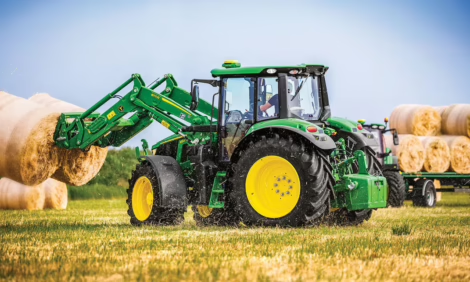



CME: USDA Ruling on Wholesale Pork Price Reporting
US - USDA’S Agricultural Marketing Service published its final rule on mandatory reporting of wholesale pork prices last week, write Steve Meyer and Len Steiner. The rule establishes the procedures that AMS and covered
packers (plants that process 100k or more hogs per yerar) will use in
reporting prices of wholesale cuts sold to retail stores, restaurants and
other processors as well as products exported to Canada and Mexico.
The most frequent question we hear is “Why is this just now
happening? Haven’t the beef packers reported prices for years?“ To
answer the second question first: Yes, beef packers have reported
prices of all wholesale cuts since 2001 under provision of the Livestock Mandatory Reporting Act (LMRA) of 1999. That act was hammered out for cattle/beef and hogs by producers and packers and presented to Congress as a “Here, we agree on this“ bill that Congress
didn’t have to dicker over. The beef sector agreed to include wholesale cuts. The pork sector did not. Its as simple as that. Including
wholesale pork at the time would have been a deal killer.
But times have changed. Recent interest in adding wholesale pork cuts to the mandatory price reporting systems was intensified by consolidation among the buyers of wholesale pork and the
continued reduction in the number of animals for which prices are negotiated on a daily basis. Those actors do not seem too related but
they coalesced nicely to drive this move make reporting mandatory.
There was a time when pork packers were in a more favorable knowledge and information position in the pork marketing chain.
While we believe (and most research shows) the markets they worked
in were very competitive, the packing sector was more concentrated
than both their suppliers and their customers. That is still true, but not
nearly as true as it once was, especially relative to customers. The
emergence of Wal-Mart and wholesale clubs and consolidation of other retailers has created pork customers that have a very good view of
the marketplace. Both buyers and sellers of pork have felt in recent
years that they were not seeing the complete value picture based on
the scant proportion of products whose prices were being reported
under the voluntary system. As can be seen in the top chart at right,
this percentage has actually stabilized since 2006 but has done so at a
VERY low level.
Producers have always wanted a better picture of the value
of their products in downstream markets but that interest has increased as the number of hogs for which a price is negotiated on a
daily basis has declined. See the bottom chart. In addition, most of
the 40% of all hogs whose price is set by a hog or pork market formulas depend upon this negotiated price as well. A viable alternative for
pricing these hogs would be to tie their price to the cutout value but the
current cutout value is based only on those 3-4% of the products
whose prices are now reported under the voluntary system. Increasing that percentage will, the thinking goes, provide a more stable and
dependable value measure for both pork and hogs.
Reporting will begin in January. Voluntary reporting will continue for 6 months with data being generated by both systems so pricing formulas can be adjusted. USDA mentions a 4-month education
and outreach period following the January start-up but does not pinpoint a date to actually begin publishing prices from the new system









